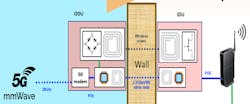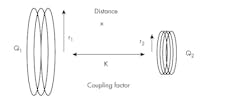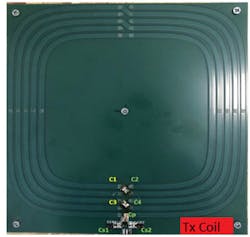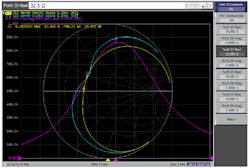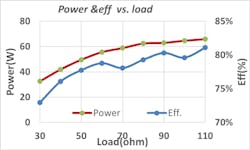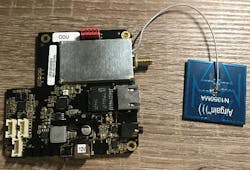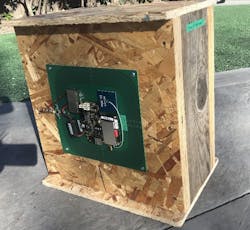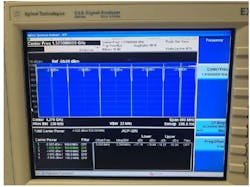Download this article in PDF format.
Wireless technology has become more sophisticated and pervasive with the beginning of the 5G network rollout. As the infrastructure becomes widely deployed and the technology matures over the ensuing years, 5G will make sense for many more applications.
5G coverage, besides being impacted by the physical distance between cell towers/repeaters, depends on the environment. 5G networks aren’t particularly good at providing coverage when the signal is interrupted by walls, water towers, and other barriers to RF propagation. Also, current 5G systems draw more power than other competing technologies. Well-architected power-management schemas to ensure useful operating life, the maturing of IoT, and wireless charging will all undoubtedly work together to create more technology innovation for 5G infrastructure.
Magnetic-resonance-based wireless-power-transfer technologies such as AirFuel1 have emerged in recent years, leveraging their loosely coupled nature, higher operating frequency (6.78 MHz), and ability to offer differentiation in position flexibility, large separation distance, and multi-device charging capabilities.
The trend for 5G networks will likely result in operating at very high frequency such as millimeter wave (mmWave) with large bandwidth for the ever-increasing connected world. For this fixed wireless-access (FWA) application, the network outdoor unit (ODU) needs power from the indoor power line and adapters. This could be accomplished by drilling holes through residential walls for connectivity. However, cost, regulations, and religious customs are issues preventing the connectivity of these systems in many regions.
The Wireless Power Transfer (WPT) system described in this article is a suitable power-transfer solution for a wireless mmWave ODU (Fig. 1). This WPT application can also be used for 5G micro base stations as well as IoT devices such as IP cameras and optics network terminals (fiber-to-home) with wireless data transfer (WDT). With the advantages of spatial freedom and high separation distance capability, the applicability of this WPT system for WDT is endless.
Figure 2 depicts the conventional WPT system, consisting of a constant-current RF source in the form of a power amplifier (PA) and transmitter and receiver resonator coils. On the receiver side, a full-bridge rectifier transforms the coupled RF power into a dc signal. Tx and Rx resonators (coils) shouldn’t be overlooked. Based on AirFuel specifications, the resonators are required to exhibit certain performance characteristics; among them, minimum magnetic-field variation is one of the most important. The PA implementation in this design is a high-efficiency Class FE2 constant-current-mode amplifier with GaN technology devices,2.3,4 which can offer more than 90% efficiency over a very wide impedance range.
The coil design for the FWA application differs from that of conventional coils and is optimized for uniform field distribution across a large gap. This design focuses on the maximum mutual coupling factor over a 200-mm gap between coils. The charging area is smaller than conventional coil designs, especially for Q-value optimization for best system efficiency.
Coil Design for a 200-mm Gap
With respect to coil typology, this FWA WPT system design aims to provide a larger charging gap through the wall of a house compared to a conventional resonance WPT system. It provides more surface for multiple devices and flexibility in the placement of charging devices for more efficient power transfer. Hence, the Q of the transmitter coil should be large enough to gain a high mutual coupling factor to transfer more power to the other side of the wall.
However, as the size of the Tx coil increases, efficiency drops due to the lower coupling coefficient and longer Tx coil wire resistance. A typical size of 200 × 200 mm is wide enough to transfer the power at a 50-mm gap with optimized efficiency.5 However, the efficiency drops when the gap widens to more than 100 mm.
The 200 × 200-mm Tx coil for this application has five turns and a 4-mm trace width with uniform 3-mm spacing to trade off the thermal performance at high power operation and the drywall area of a residential property. The coil’s synthesis objective is based on a unique figure of merit (FOM; expressed as U) that’s defined in Figure 3. Q is the quality value of the coil at 6.78 MHz, and r1 and r2 are the respective radiuses of the coils. For this 5G FWA application, Tx and Rx coils are of the same design.7
When r1 = r2 = r and Q1 = Q2 = Q:
As determined by the equation, the coils achieve an FOM U value of 14 and the coil-to-coil optimized efficiency is the maximum magnetic field in the X direction at a 200-mm, 50- × 50-mm area.
We used the Biot-Savart Law to calculate the magnetic field produced by an arbitrary current filament structure. Optimization is focused on the FOM in Equation 1 and with Q values as the goal function. The relevant variables are the number of turns, spacing of turns, and width of each turn.
As shown in Figure 4, with the 200-mm gap distance, the coil-to-coil efficiency is more than 87% when U is 14 and both optimized Tx and Rx impedances are around 30 Ω. The Tx coil itself can be seen in Figure 5.
Those impedances are in the maximum efficiency range (Fig. 6), which guarantee the system could be operated with maximum performance.
Figure 7 depicts the end-to-end efficiency performance of the through-wall WPT system. The system can deliver more than 65 W with 81% efficiency into a dc load of from 70 to 110 Ω. To avoid high operating temperatures, the efficiency at higher-power operation is significant for 5G through-wall FWA applications.
In Figure 8, we see the ODU module biased at 12 V and indoor unit (IDU) biased at 48 V. The Rx coil output is fed to the rectifier and then to the dc-dc converter, which converts the rectifier’s output voltage to 12 V. Figure 9 shows the WPT system mounted on a dummy wall for test purposes.
The five data channels at 500 MHz, with each having 100-MHz bandwidth and center frequencies from 1175 to 1575 MHz, deliver a total Tx carrier power of 4.9 dBm. The test spectrum is shown in Figure 10. To test the throughput, two laptops are used in the bench setup for Tx and Rx, respectively. The measured throughput data can be seen in Figure 11.
The remarkable 81% efficiency performance and the large gap through-wall system demonstrates very impressive performance for FWA radio. It will provide more power capability to power up 5G infrastructure units. The AirFuel through-wall WPT system’s efficiency and power performance are more advanced than lower-frequency-operation systems.6,8
Tiefeng Shi is RF Power and Wireless Power Applications Engineering Manager, and Paul Wiener is Vice President Strategic Marketing at GaN Systems Inc.
References
1. R. Tseng, B. von Novak, S. Shevde, and K. A. Grajski, “Introduction to the alliance for wireless power loosely-coupled wireless power transfer system specification version 1.0,” 2013 IEEE Wireless Power Transfer (WPT), Perugia, 2013, pp. 79-83.
2. Songnan Yang, Bin Xiao, and Tiefeng Shi, “Constant current power amplifier for MHz magnetic resonance wireless power transfer systems,” IMS2017, Honolulu, Hawaii, 2017.
3. Tiefeng Shi, Paul Wiener, “High power Constant Current Class EF2 GaN Power Amplifier for AirFuel Magnetic Resonance Wire-less Power Transfer Systems,” PCIM 2018.
4. Tiefeng Shi, Paul Wiener, “Low cost 50W Class EF2 PA for Magnetic Resonance Wire-less Power Transfer Applications,” PCIM 2019.
5. Young-Sik Seo, Zachariah Hughes, Matt Hoang, Deena Isom, Minh Nguyen, Smitha Rao, and J.-C. Chiao, “Investigation of Wireless Power Transfer in Through-wall Applications,” Proceedings of APMC 2012, Kaohsiung, Taiwan, Dec. 4-7, 2012.
6. Minfan Fu, Zefan Tang, Ming Liu, Chengbin Ma, and Xinen Zhu,“Full-Bridge Rectifier Input Reactance Compensation in Megahertz Wireless Power Transfer Systems,” WoW 2015, Daejeon, South Korea.
7. Essam Elkhouly and Songnan Yang, “Transmitter Coil Design for Resonant Wireless Power Transfer,” WoW 2016, Knoxville, Tenn.
8. Young-Sik Seo, Zachariah Hughes, Matt Hoang, Deena Isom, Minh Nguyen, Smitha Rao, and J.-C. Chiao, “Investigation of Wireless Power Transfer in Through-wall Applications,” APMC 2012, Kaohsiung, Taiwan, Dec. 4-7, 2012.

